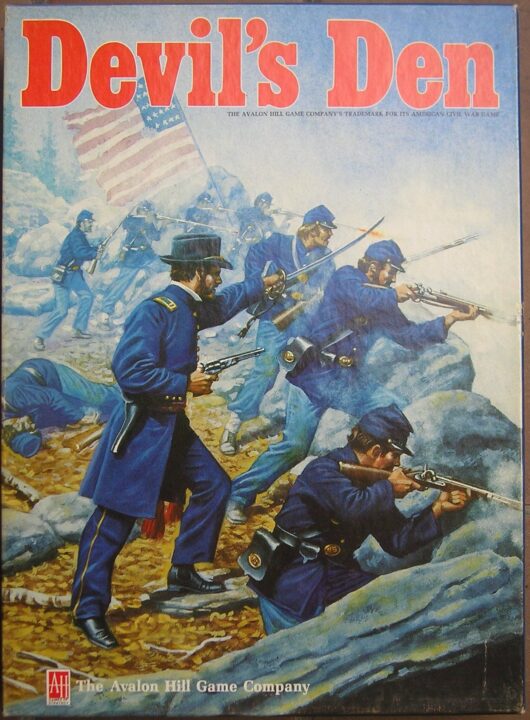Time to talk about the most devilish game on my shelf—yes, this is a review, and no, I didn’t set my table on fire playing it (my cat did, but that’s a story for another time). If you want to know whether you’ll get a thrill or just rage-quit, stick around. I’ve played this one with friends who all lived to tell the tale, and I’ve got some fiery opinions to share. Let’s see if it’s really worth summoning to your next game night.
How It Plays
Setting Up
First, unleash all the spooky components on the table. Each player grabs their colored minions and a player board. Shuffle the event cards. Place the den board in the middle like an evil cheese platter—then stack up the doom tokens where the rules tell you. Hand out some starting coins and you’re ready to go!
Gameplay
On your turn, you secretly pick an action. Will you attack, defend, or mess with your friends’ plans? Everyone reveals moves at the same time. Events add chaos—someone always forgets what they picked and blames the cat. When you fight, roll dice to see who wins, then collect loot or mop up after your failed attempt. Watch out: there are cards that can mess you up, many of them played by my so-called friends.
Winning the Game
The first player to claim enough soul tokens—or whoever survives when the doom tokens run out—wins. Basically, it’s a race to be the baddest baddie. Or, as is typical for my crew, the luckiest one not to get ganged up on in the last round.
Want to know more? Read our extensive strategy guide for Devil’s Den.
How Devil’s Den Keeps The Playing Field Level (Or Tries Its Best)
Let me set the scene: Four of us, snacks on the table, ready for an epic match of Devil’s Den. We all want to win—but more than that, we want it to feel fair. I’d played some games before where the moment someone got ahead, the rest of us might as well just make tea and call it a day. Devil’s Den, thankfully, doesn’t trip on that banana peel. The core mechanics give everyone a fighting chance right up until the end.
The biggest thing I noticed is how the game uses tactical movement with a twist—every player picks their actions in secret at the same time. You have to watch your friends like a hawk and second-guess what sneaky moves they’ll pull. There’s bluffing, mind games, and, yes, some friendly shouting. This part? Chef’s kiss. But here’s the rub: Sometimes, one player with early luck gets an edge, and it can snowball. My pal Becky shot ahead in our second game thanks to a lucky card pull and the rest of us had to sweat to catch up. That felt a bit off.
What saves Devil’s Den from being a total luck fest is the way clever choices tilt the game back in anyone’s favor. There are always two or three different ways to flip the tables, and if you mess up, it almost always feels like your own fault—not the game’s. I just wish the catch-up mechanics were a bit stronger when someone leaps ahead on pure luck.
Hold tight, because next up, I’m rolling out my thoughts on the Devil’s Den artwork, theme, and all those tasty bits you actually touch!
Sinister Aesthetics: Theme, Artwork, and Devil’s Den’s Components
When you open Devil’s Den, you don’t just get a board game—you get a front row seat to a midnight meeting with mischief. The theme is thick enough to cut with a butter knife. Every token, card, and even the inside of the box oozes with this cartoonish-but-menacing charm. If Tim Burton and your high school art teacher teamed up for game night, this is probably what they’d dream up.
The artwork pulls no punches when it comes to mood. Each illustration leaps off the cards like an over-caffeinated imp. Characters have big personalities, bigger horns, and sometimes suspiciously well-kept mustaches. The color palette sticks to deep reds and purples, making it feel like you’re actually in the depths of Devil’s Den rather than just in your friend’s basement. (I swear, I even looked behind my couch for lost souls. None found.)
And oh, the components! The tiles feel chunky and satisfying—one of my friends actually dropped a piece and it survived, unlike his dignity from last week’s defeat. The cards are smooth with a finish that makes shuffling a treat, even if your hands are as sweaty as mine get during tense moments. Only minor gripe? The miniatures can be a bit wobbly if you’re heavy-handed, but hey, nobody’s perfect (except maybe my Aunt Sharon’s famous dip).
All in all, Devil’s Den shines when it comes to looks and feel. Next up: I’ll talk about replay value and game length—so stretch, hydrate, and stay tuned, because my recent game night got seriously competitive.
Replay Value and Game Length in Devil’s Den
Let’s talk about replay value. When I bust out Devil’s Den on game night, my friends don’t groan—always a good sign. The game packs enough twists to make every play feel fresh. You get different setups, and the roles switch, so nobody gets stuck being the same lousy demon guardian every time (nothing against demon guardians, but variety is the spice of Hell, right?).
What really stands out is how you can try new approaches each time. Last Friday, I went full aggression. Spoiler: my strategy faceplanted. The next round, I played sneaky and—boom!—much better outcome. The game rewards adapting your style and learning from your inevitable mistakes. It’s not like those games where, after two goes, you’ve seen all the surprises and want to use the box as a plant stand instead.
Game length is another win for Devil’s Den. We clocked most games in just under an hour. That’s long enough to feel epic but short enough that you don’t consider updating your will mid-match. It keeps everyone alert and eager for revenge in the next round, which is exactly what I look for when my victory toast gets interrupted by a swift defeat.
If you love board games that keep calling you back for “one more round,” Devil’s Den delivers. But how much does luck mess with your carefully crafted plans? Well, that’s a story for our next section, so get your four-leaf clovers ready!
Does Luck or Strategy Rule in Devil’s Den?
Alright folks, grab your pitchforks and dice—we need to talk about luck versus strategy in Devil’s Den. This game says it’s all about clever moves and sharp thinking. But after too many showdowns in my kitchen, I have to say: Lady Luck shows up way more often than I’d like. Oh, she’s not flipping the whole table, but she definitely bumps it with her hip.
Devil’s Den puts you in a tense standoff, plotting your moves, bluffing, and trying to outwit the other players. I love the mind games. It’s like playing chess, if chess had a goblin that randomly swapped your queen for a moldy potato. Some of the event cards and dice rolls can shake things up, dropping a boulder on your plans. One round, my friend Sheila was dominating—unbeatable! Suddenly, the game hands her a curveball and poof, her lead vanished faster than my last paycheck.
But here’s the thing: good players bounce back. There’s plenty of room to recover if you keep your wits about you. You can’t relax, and you need a Plan B, C, or maybe Z. I’d say strategy usually wins, but sometimes it gets sucker-punched by pure chance. If you like games where your big brain always triumphs, you might get frustrated here. If you don’t mind some chaos and can laugh when your plans explode, Devil’s Den will suit you better than a velvet cape on a villain.
So, do I recommend it? Sure—if you like your strategy with a spicy side of randomness. If not, run away like you saw the devil himself at the crossroads!
Conclusion
Alright, that wraps up my wild ride with Devil’s Den. The art rocks, the theme oozes with spooky fun, and no two games ever feel the same. But hey, if you hate losing because your mate rolled better (again), this one might roast your patience. For me and my gang, it landed somewhere between ‘let’s go again’ and ‘where did my strategy go?’ If you’re okay with a dash of chaos, give it a go. If not—maybe stick with chess. Thanks for reading my review—may your dice always land snake eyes (unless I’m playing you)!


